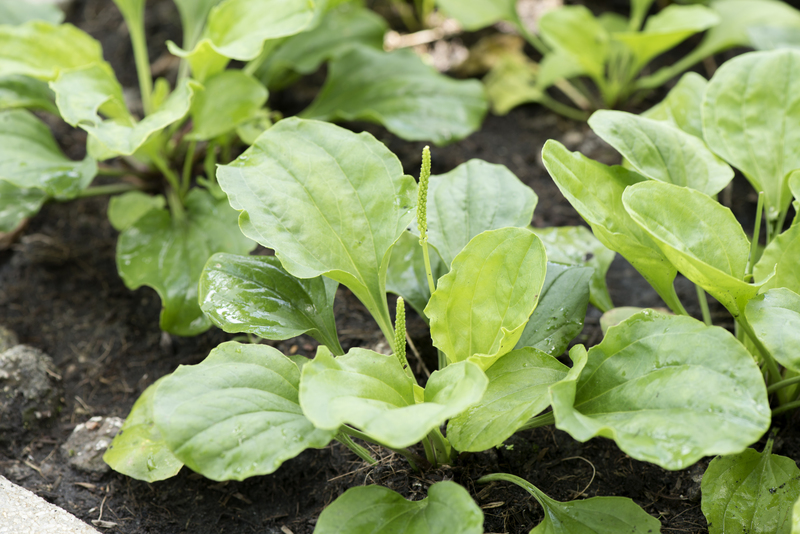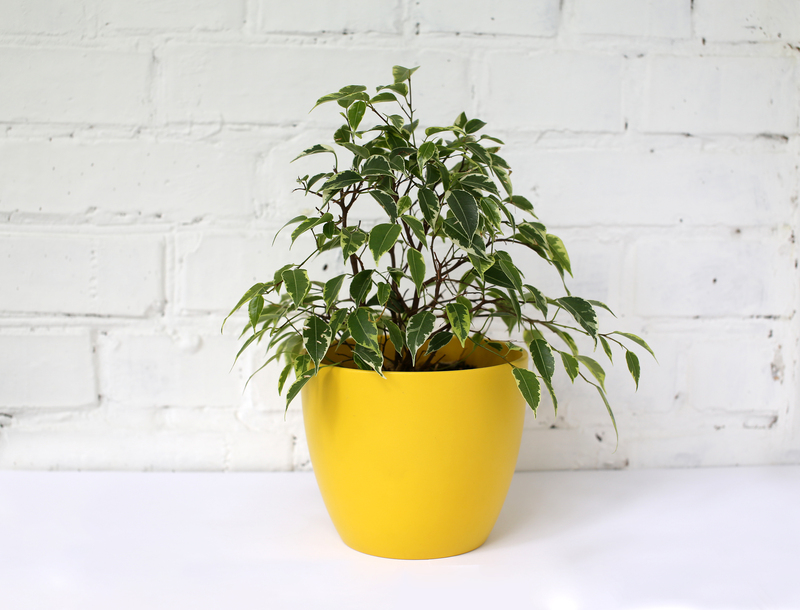Keeping Your Orchids Blooming All Year Round
Posted on 04/07/2025
Keeping Your Orchids Blooming All Year Round
Orchids captivate plant enthusiasts with their exotic flowers, intricate shapes, and vibrant colors. However, many orchid lovers find it challenging to keep these beautiful plants in bloom throughout the year. With proper care and attention to your orchid's unique needs, it is possible to enjoy continuous or frequent blooms, adding elegance and natural beauty to any indoor space. In this comprehensive guide, we will reveal the secrets to keeping your orchids blooming all year round.
Understanding Orchid Flowering Cycles
Before you can keep orchids in bloom year-round, it's crucial to understand their natural flowering cycles. Most orchid species go through periods of active growth, spike (flower stem) development, blooming, and dormancy or rest. The duration and timing of these phases vary between species and hybrids. Some orchids, like Phalaenopsis (moth orchids), can bloom several times a year, while others, like Cymbidium or Dendrobium, have a more defined annual blooming season.
Key Points:
- Phalaenopsis: Can bloom all year with proper care
- Dendrobium: Usually blooms once a year, with dormancy period
- Cattleya: Often bloom once or twice per year
- Oncidium: Frequent bloomers with correct care

Essential Factors for Year-Round Orchid Blooms
To achieve frequent or constant orchid blooms, you must address all key aspects of their environment and care. Let's explore each essential factor:
1. Optimal Light Exposure
Light is the most critical factor for continuous orchid blooming. Too little light will stunt growth and prevent flowers. Too much light can burn leaves and stress the plant.
- Phalaenopsis: Bright, filtered light (east or west window); avoid direct midday sun
- Cattleya, Oncidium: Brighter light (south window, shaded with sheer curtain); yellow-green leaf coloration indicates ideal light levels
- Dendrobium: Moderate to bright indirect sunlight
Tip: If natural light is insufficient, use full-spectrum LED grow lights. Set lights for 12-14 hours a day for optimal orchid flower production.
2. Precise Watering Techniques
Improper watering is the number one reason orchids fail to bloom or suffer root rot. Orchids generally prefer to dry out between waterings, but never become bone dry.
- Water when: The potting medium is just dry to the touch. Examine roots - silver roots need water, green roots have just been watered.
- Avoid: Letting orchids sit in standing water, which leads to root rot. Use pots with drainage holes.
- Technique: Water in the morning. Let water flow through the pot so roots and medium are thoroughly moistened.
3. The Right Humidity and Air Circulation
Orchids thrive in humidity levels of 40-70%. Indoor air in homes, especially during winter, can be far too dry, stalling blooms and causing bud drop.
- Use a humidity tray (shallow tray filled with water and pebbles beneath the orchid pot)
- Group orchid plants together to increase localized humidity
- Mist leaves occasionally, never the flowers
- Run a room humidifier for the best results
- Ensure gentle air circulation to prevent fungus and mimic wild conditions
Tip: Avoid putting orchids near vents, radiators, or drafts, which can cause rapid drying and stress.
4. Temperature and Seasonal Triggers
Temperature swings play a key role in initiating blooms in orchids. Many orchids require a slight temperature drop at night - called the "night chill" - to start spike development.
- Phalaenopsis: 65-75?F (18-24?C) day, 60?F (16?C) night
- Dendrobium, Cattleya: 70-85?F (21-29?C) day, 55-60?F (13-16?C) night
- Provide night temperature 10?F (5?C) cooler than day for 2-3 weeks to trigger blooming
Tip: During fall, place orchids near a slightly open window (away from direct chill) for a few nights to stimulate flower spike formation.
5. Proper Feeding and Fertilization
Balanced nutrition is vital for continuous orchid flowers. Regular, diluted feeding helps maintain plant vigor and encourages new spikes.
- Use a balanced orchid fertilizer, such as 20-20-20, at half strength every 2-3 weeks during the growing season
- Switch to a "bloom booster" (high in phosphorus, e.g., 10-30-20) when you want to encourage flowering
- Flush pots with clean water every month to prevent fertilizer salts buildup
Important: Over-fertilizing can damage sensitive orchid roots and inhibit blooms.
6. Repotting and Potting Media
Orchids require special potting media - bark, sphagnum moss, or specialized orchid blends. Potting media breaks down over time, reducing root aeration and promoting disease.
- Repot orchids every 1-2 years or when media looks decomposed
- Choose a slightly larger pot only if needed; orchids prefer snug containers
- Always use new, sterilized potting mix
- Gently loosen and trim dry or dead roots during repotting
Tips and Tricks For Year-Round Orchid Blooms
Keeping orchids blooming all year may seem daunting, but with a few expert tricks, you'll soon be rewarded with ongoing floral displays. Here are some advanced strategies:
- Staggering Bloom Cycles: Grow a variety of orchid species and hybrids with different blooming periods. This ensures there is always something in bloom, even if no single plant flowers year-round.
- Bounce-Back Blooming: For Phalaenopsis, do not cut the entire flower spike after blooming. Instead, cut just above a node on the spike; this can encourage secondary branching and new blooms.
- Environmental Consistency: Keep temperature, watering, and humidity as consistent as possible, especially for fussy or high-end orchids.
- Rotate Orchids: To ensure all sides receive equal sunlight, rotate pots regularly for even growth.
- Monitor for Pests and Disease: Remove dead flowers and leaves promptly, and inspect weekly for signs of mites, scale, or fungal spots.
- Seasonal Adjustments: Orchids may need less water and food in winter, and increased humidity during the dry season.
Common Orchid Blooming Problems & Solutions
No matter how attentive you are, problems can sometimes arise. Here's how to address some typical issues that may prevent your orchids from blooming year-round:
- No Flower Spikes: Check that your orchids receive enough light and experience a night temperature drop. Ensure roots aren't waterlogged or rotting.
- Buds Drop Before Opening: Sudden temperature or humidity changes, or moving the orchid during bud development, can cause this. Increase humidity and stabilize environment.
- Spikes But No Flowers: Lack of fertilizer, low light, or overwatering can cause flower spike growth without actual blossoms.
- Leaf or Root Problems: Yellow or limp leaves indicate overwatering; shriveled pseudo-bulbs indicate dehydration. Check watering schedule and root health.
Best Orchid Species for Continuous Blooming
If you're determined to keep orchids flowering all year round, start with these reliable bloomers:
- Phalaenopsis (Moth Orchid): Known for repeat blooms and long-lasting flowers; can flower every 2-3 months with proper care.
- Oncidium ("Dancing Lady"): Frequent bloomers if provided with bright light and regular feeding.
- Paphiopedilum (Slipper Orchid): Most varieties re-flower multiple times annually.
- Ludisia (Jewel Orchid): Grown for both flowers and ornamental leaves; reliable bloomer indoors.
- Dendrobium Phalaenopsis types: Not true Phalaenopsis, but these hybrids also produce multiple spikes per year.
Tip: Consider rotating several of these species so that as one finishes blooming, another is ready to start.

Frequently Asked Questions About Year-Round Orchid Blooms
Can orchids flower multiple times in a year?
Yes! Many orchids, especially popular Phalaenopsis hybrids, will rebloom several times per year if they receive ideal care and proper light and temperature cues.
How do I make my orchid bloom again?
Maintain consistent care: provide optimal light, humidity, and temperature. After the flowering cycle, encourage a brief rest, then resume feeding and expose to night temperature drops to promote new spike growth.
Is it difficult to keep an orchid in bloom all year round?
While some orchids need rest, others can be induced to flower repeatedly. With informed care and by mixing genera with different bloom schedules, you can enjoy year-round orchid blossoms in your home.
Conclusion: The Joy of Continuous Orchid Flowers
Keeping your orchids blooming all year round is a rewarding goal for any indoor gardener. By understanding your orchids' unique needs and carefully managing their care, you can enjoy a continuous parade of magnificent blooms. Combine different species with overlapping flowering cycles, optimize their growing conditions, and address issues promptly. The effort is worth it--every new flower is a triumph, bringing living beauty and tranquility into your home throughout the year.
Remember: Consistency, observation, and patience are key to the art of perpetual orchid blooms. Happy growing!


